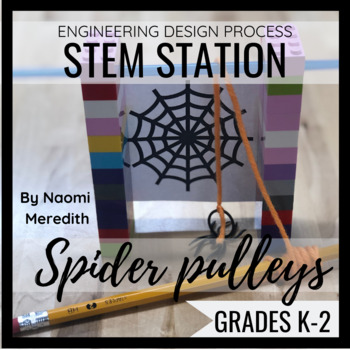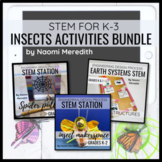Spider Web STEM Challenge | Spider Pulleys
- Zip
Also included in
- A variety of Fall themed STEM activities and Technology lessons to help celebrate seasons and holidays during this time. Do you have weekly STEM-time in your classroom and are struggling to find lessons each month?Are you a STEM teacher who is looking for supplemental lessons?Needing hands-on sub plPrice $42.00Original Price $52.50Save $10.50
- Celebrate Fall with these spider STEM activities and technology lesson bundle. 4 ready-to-go lessons for elementary students of all ages. All lessons have a printable and digital component to fit your classroom needs.__________________________________________________What exactly am I getting?SpiderPrice $15.25Original Price $20.25Save $5.00
- A variety of STEM and Technology activities to help celebrate seasons and holidays year round.Do you have weekly STEM-time in your classroom and are struggling to find lessons each month? Are you a STEM teacher who is looking for supplemental lessons? Needing hands-on sub plans that engage your studPrice $181.13Original Price $222.50Save $41.37
- A collection of insect lesson plans that will add a STEM component to your current unit. Each lesson uses the the Engineering Design Process to explore various insect topics and create a hands-on experience. Print-and-go and digital resources to guide creation and exploration.=======================Price $18.40Original Price $23.00Save $4.60
Description
Learn more about the power of the simple machine, pulleys, by designing one to pull the spider up to its web. By going through the Engineering Design Process, students will learn more about spiders and pulleys, create a pulley, modify their design and share their work with peers.
==========================
Go through the Engineering Design Process with the following:
- STEM Challenge Card
- Engineering Design Task Checklist to keep track of work
- Learn More About Spider and Pulleys Video Links with Reflection
- Checklist for ways students can improve their design
- Planning Sheet for building design
- Draw or insert images of final design sheet
- End of activity reflection sheet
Visual teacher lesson plans are also included to help you with your planning and teaching this lesson.
==========================
BONUS!
- Engineering Design Process Poster
- Pulley Vocabulary poster
- Spider Life Cycle poster
==========================
Additional materials needed for this challenge
- LEGO bricks
- Unsharpened pencils
- yarn/string
- spider rings
- masking tape
==========================
How you will receive this product:
Various digital file types to meet your sharing needs
- PDF (non-editable, various sizes)
- Google Slides link
- PowerPoint file
- Seesaw activity
All Seesaw files are pre-loaded into activities. Upon purchase, you'll get the share link to copy & edit and add to your Seesaw Activity library, then assign to students. I saved you A LOT of steps!
How to assign digital versions to students:
- Google Slides pair perfectly with Google Classroom. Once you click the button, it will automatically make a copy for each student
- PowerPoint works well with Microsoft OneDrive users. Share with students within Microsoft Teams
- Seesaw Activities can be assigned to students and automatically make a copy. You can also use the Google Slides version if you students log in with their Google account
===========================================
Common Core State Standards Addressed:
Kindergarten: RL.K.10, RL.K.3 SL.K.5, SL.K.2, SL.K.1a, K.W.6, K.W.8
First Grade: RL.1.10, RL.1.7, RL.1.3, SL.1.6, SL.1.5, SL.1.2, SL.1.1a, 1.W.6, 1.W.8
Second Grade: RL.2.10, RL.2.7, SL.2.5, SL.2.2, SL.2.1a, 1.W.6, 1.W.8
Next Generation Science Standards Addressed:
Engineering Design Process
K-2: NGSS K-2-ETS1-1, NGSS K-2-ETS1-3, NGSS K-2-ETS1-2
Mathematical Practices Addressed:
MP1: Make sense of problems and persevere in solving them
===========================================
Perfect for:
- Regular Kindergarten, 1st and 2nd grade classrooms
- STEM/STEAM Labs & Makerspace
- Technology Labs
- Science Experiments
- Math Hands- On Learning
- Centers Rotation
- Substitute/Sub Plans
- Library & Media centers
- After-School Clubs
- Extension Groups
- Summer Clubs
- Specialized Classes
==========================================
Love integrating literacy with STEM? Check out my other STEM & Stories resources for your classroom!
==========================================
When you purchase a product from my store, a portion of the proceeds will be donated to classrooms in need of technology to enhance their students’ learning experience.
===========================================
Connect with me for more inspiration!
Naomi Meredith
Navigating STEM & tech in the K-5 classroom.
Click here to be updated when new products are posted.
Instagram: @naomimeredith_









